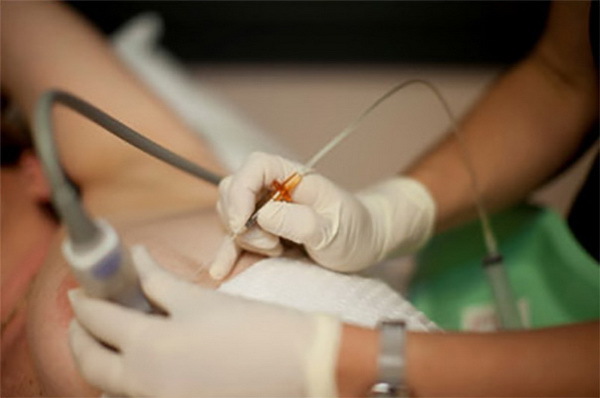Colonoscopy: the essence of the method, indications and rules of preparation for the procedure
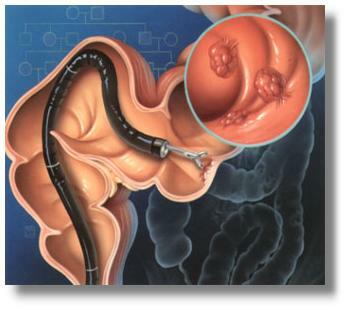 Colonoscopy is a diagnostic procedure necessary for an objective assessment of the condition of the large intestine mucosa.The procedure makes it possible to detect in a timely manner the presence of neoplasms - both benign and malignant.The very first rectoscopes allowed to examine no more than 30 cm of the human rectum.Modern fibrocolonoscopes appeared in the middle of the last century.They use fiber optics and so-called."Cold" light sources, which completely excludes the possibility of thermal burn of the mucosa of the intestinal wall.The length of the device is about one and a half meters, and the diameter does not exceed 10 mm.Due to the presence of special thin channels, additional devices can be inserted into the colonoscope to remove polyps, take samples of tissues or extract the accumulated liquid or air.
Colonoscopy is a diagnostic procedure necessary for an objective assessment of the condition of the large intestine mucosa.The procedure makes it possible to detect in a timely manner the presence of neoplasms - both benign and malignant.The very first rectoscopes allowed to examine no more than 30 cm of the human rectum.Modern fibrocolonoscopes appeared in the middle of the last century.They use fiber optics and so-called."Cold" light sources, which completely excludes the possibility of thermal burn of the mucosa of the intestinal wall.The length of the device is about one and a half meters, and the diameter does not exceed 10 mm.Due to the presence of special thin channels, additional devices can be inserted into the colonoscope to remove polyps, take samples of tissues or extract the accumulated liquid or air.
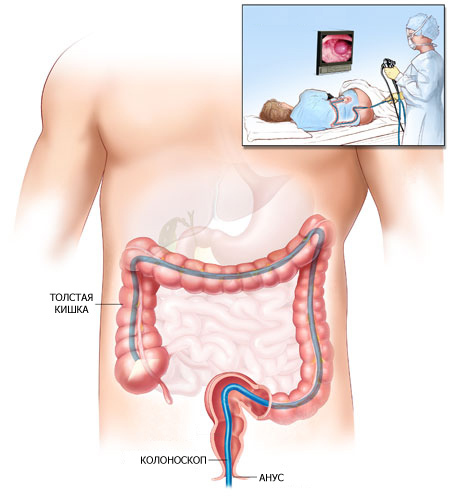 Colonoscopy is performed by means of a special probe( endoscope), which is equipped with a portable light source.In most cases, the procedure is well tolerated by the patient, since it is accompanied by a minimum of unpleasant sensations.During the manipulation may feel a sense of discomfort, but the medical staff( doctor and nurse) are able to minimize them.Try to follow the instructions of the doctor, and the examination will not give you unpleasant sensations.To reduce to zero the discomfort will allow the use of the doctor so-called."Rotational" technique, based on accurate and consistent advance of the endoscope through fixed areas of the intestine and its natural curves, followed by pulling the colonoscope and picking the passed straight section and smoothing the angle of bending.Currently, the colonoscopy uses the most modern equipment, which is subject to decontamination, so the risk of infection is minimized.
Colonoscopy is performed by means of a special probe( endoscope), which is equipped with a portable light source.In most cases, the procedure is well tolerated by the patient, since it is accompanied by a minimum of unpleasant sensations.During the manipulation may feel a sense of discomfort, but the medical staff( doctor and nurse) are able to minimize them.Try to follow the instructions of the doctor, and the examination will not give you unpleasant sensations.To reduce to zero the discomfort will allow the use of the doctor so-called."Rotational" technique, based on accurate and consistent advance of the endoscope through fixed areas of the intestine and its natural curves, followed by pulling the colonoscope and picking the passed straight section and smoothing the angle of bending.Currently, the colonoscopy uses the most modern equipment, which is subject to decontamination, so the risk of infection is minimized.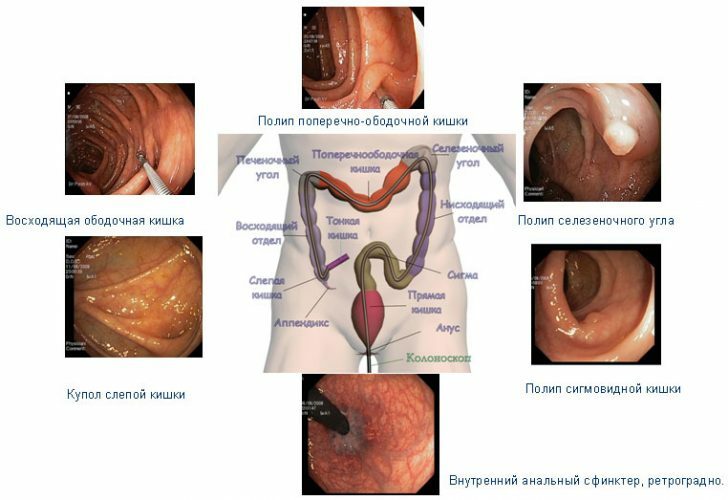
Indications for colonoscopy
Indications for colonoscopy may include:
- pathological admixtures in faeces;
- family predisposition to colon tumors( presence in the family of close relatives suffering from these pathologies);
- preventive examination for possible diseases after surgery on the large intestine;
- specification of data obtained by other survey methods.
How is colonoscopy prepared?
Three days before the colonoscopy, vegetarian food, black bread is excluded from the diet.With propensity to constipation, the laxative is indicated. The day before the study, the patient:
- Restricts its diet to broths and soups.
- Accepts food in small quantities.
- 2 hours after a light lunch - 2-3 spoons of castor oil.
- Do not eat.
- In the evening makes 2 enemas 1-2 liters each.Enema is made before the appearance of pure washing water.
Directly on the day of the survey:
- In the morning - 2 cleaning enemas.The result is clean washing water.
- If you can not have breakfast - do not eat, if you suffer from diabetes or some other disease that requires regular meals - limit yourself to a light breakfast of cereal, coffee, tea, a slice of bread.
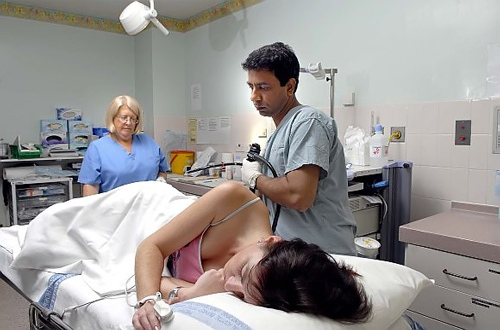 When preparing for a colonoscopy, the enema can be replaced by the use of polyethylene glycol or Fortrans preparation, which are prescribed according to a special scheme.On the day before the study, the patient is administered drugs from the group of antispasmodics( Dicetel, Drotaverin, No-Shpa), which subsequently allows to relax the musculature of the wall of the colon and reduce the feeling of discomfort.To reduce soreness, on the day of the examination, injection of analgesic and relaxing drugs( in particular Relanium in combination with Tramal) is indicated.In some cases, general anesthesia( anesthesia) may be necessary.
When preparing for a colonoscopy, the enema can be replaced by the use of polyethylene glycol or Fortrans preparation, which are prescribed according to a special scheme.On the day before the study, the patient is administered drugs from the group of antispasmodics( Dicetel, Drotaverin, No-Shpa), which subsequently allows to relax the musculature of the wall of the colon and reduce the feeling of discomfort.To reduce soreness, on the day of the examination, injection of analgesic and relaxing drugs( in particular Relanium in combination with Tramal) is indicated.In some cases, general anesthesia( anesthesia) may be necessary.
How is the procedure performed?
The colonoscopy takes 10-15 minutes on average.The study is carried out in a specially designed for this office.The patient is required to get rid of all clothing( in exchange, a special disposable underwear is given out).Pay attention to : the large intestine has a length of "only" 1.5 meters, and the diameter varies from 4-6 to 14 cm, so its examination is not particularly difficult. During the procedure, through the anus, the probe is inserted into the lumen of the rectum.The tube of the colonoscope gradually moves inward, which is accompanied by the supply of air under pressure to spread the walls of the intestine.At this time, the patient may feel a bloating, but after the end of the survey, excess air will be pumped through a specially designed endoscope channel.Thus, all negative feelings will disappear.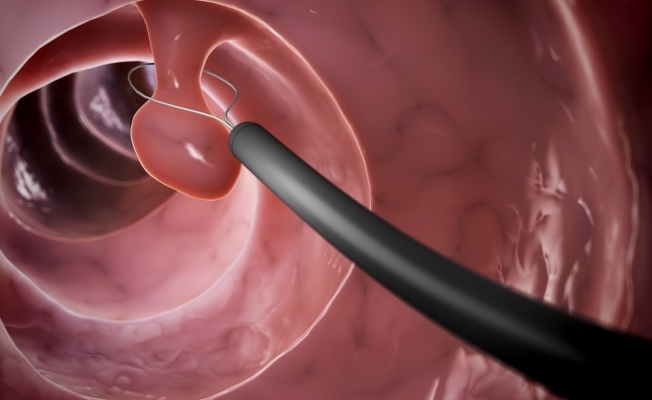 During the examination, the patient may be asked to take the most optimal position: turn on his side or on his back.The movement of the apparatus during the passage of natural bends is controlled through the abdominal wall by the hand of a specialist.To clarify the diagnosis during the examination, an additional biopsy may be performed, i.e. taking samples of tissues.Most often this manipulation is carried out in the presence of polyps.At the end of this medical diagnostic manipulation do not need to adhere to a special diet.If there is a slight swelling of the abdomen, it will quickly pass as the natural release of the intestine from the gases.A doctor-endoscopist can record the research process on an optical disk, so that the patient can easily consult with other specialists.For more information on the indications for colonoscopy, the features of the procedure and the preparation for it, you will receive by viewing this video review:
During the examination, the patient may be asked to take the most optimal position: turn on his side or on his back.The movement of the apparatus during the passage of natural bends is controlled through the abdominal wall by the hand of a specialist.To clarify the diagnosis during the examination, an additional biopsy may be performed, i.e. taking samples of tissues.Most often this manipulation is carried out in the presence of polyps.At the end of this medical diagnostic manipulation do not need to adhere to a special diet.If there is a slight swelling of the abdomen, it will quickly pass as the natural release of the intestine from the gases.A doctor-endoscopist can record the research process on an optical disk, so that the patient can easily consult with other specialists.For more information on the indications for colonoscopy, the features of the procedure and the preparation for it, you will receive by viewing this video review:
Plisov Vladimir, physician-phyto-therapeutist

